Currently, companies rely on complex and distributed IT systems to deliver high-quality services to their customers. However, this complexity brings the challenge of understanding and managing the state of these systems in real-time. This is where Observability in DevOps becomes a key tool to ensure the efficiency and reliability of operations.
Observability in DevOps
What is Observability in DevOps? Observability in DevOps is the ability to collect, analyze, and visualize data from a system to understand its behavior and state in real-time. This approach is based on three fundamental pillars:
- Logs: Provide detailed information about system behavior, including errors, events, and user requests.
- Metrics: Offer quantitative data on system performance, such as resource usage, response time, and availability.
- Traces: Track the execution of requests through different system components, providing a comprehensive view of workflows.
These data allow development and operations (DevOps) teams to identify issues, analyze patterns, and make informed decisions that improve system efficiency and quality.
Importance of Observability in DevOps
Observability is essential for DevOps for several reasons:
- Rapid issue detection: It enables identifying the root cause of problems more quickly, reducing the impact on end users.
- Performance improvement: It helps detect bottlenecks and optimize resources, increasing operational efficiency.
- Increased reliability: By anticipating and preventing failures, Observability improves system stability.
- Informed decision-making: It provides actionable data that supports strategic decisions in real-time.
How to Implement Observability in Your Company
Effective implementation of Observability in DevOps requires a structured approach and the right tools. These are the key steps to get started:
1. Define clear objectives: Identify which aspects of your system you want to observe and set specific, measurable goals.
2. Implement Observability tools: There are solutions available on the market that allow you to collect and analyze log, metric, and trace data, such as Grafana, Prometheus, or Elasticsearch.
3. Automate data collection: Set up systems to continuously log and analyze data, ensuring constant monitoring.
4. Visualize data effectively: Use interactive dashboards to interpret data and facilitate issue detection.
5. Foster a culture of collaboration: Observability should be a joint effort between developers and operations teams to ensure everyone understands and uses the data.
6. Benefits of Observability for Your Company By adopting Observability as a central practice in DevOps, your company can gain several benefits:
- Reduced downtime: Rapid problem detection minimizes service interruptions.
- Increased customer satisfaction: Reliable and fast systems generate trust and loyalty from users.
- Cost optimization: Early identification of inefficiencies allows for more effective resource use.
- Future-proofing: An observable infrastructure is better equipped to adapt to changes and growing demands.
Observability in DevOps is a powerful tool that enables companies to manage complex systems more effectively. By providing a comprehensive view of the system’s state and performance, it not only helps resolve issues but also drives innovation and improves the customer experience. If your company is looking to optimize its technology operations and stay competitive, implementing Observability is the first step, and we can help you, as we are specialists in Observability for DevOps.
[dmsbutton_post]




